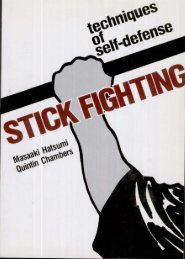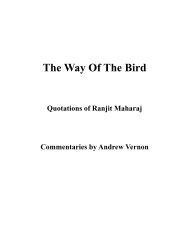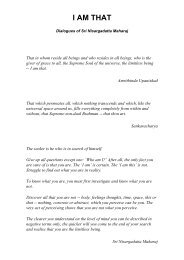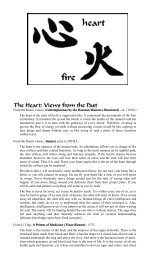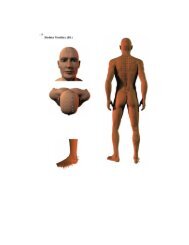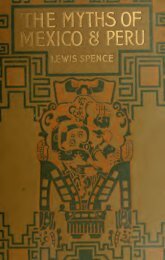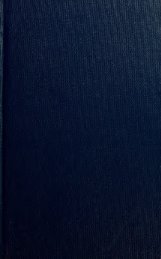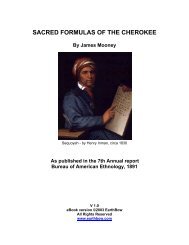Create successful ePaper yourself
Turn your PDF publications into a flip-book with our unique Google optimized e-Paper software.
Third dialogue<br />
stone, wool and the like, but nature works, so to speak, from the centre<br />
of its substratum, or matter, which is totally formless. Furthermore, the<br />
substrata of art are many, and that of nature one, because the former,<br />
formed by nature in different ways, are diverse and various, while the latter,<br />
in no way formed, is undifferentiated throughout, since all difference<br />
or diversity proceeds from form.<br />
GERVASIO. So that the things formed by nature serve as art’s material,<br />
while a single, formless thing serves as nature’s material.<br />
TEOFILO. Yes.<br />
GERVASIO. Can we know the substratum of nature, just as we can<br />
clearly see and know the substrata of the arts?<br />
TEOFILO. Doubtless, but with different cognitive principles, for just as<br />
we do not know colours and sounds through the same senses, we cannot see<br />
the substrata of the arts and of nature with the same eye.<br />
GERVASIO. You mean we see the first with the eyes of sense and the<br />
second with the eye of reason.<br />
TEOFILO. Yes.<br />
GERVASIO. Please elaborate.<br />
TEOFILO. Gladly. The relation that the form of art has with its material<br />
is the same (allowing for proportions) as that of nature with its material.<br />
Just as in art, then, while the forms vary to infinity (if this were possible),<br />
under those forms there always persists one and the same matter – the form<br />
of the tree, for example, being followed by the form of the trunk, then of<br />
a board, then of a table, a stool, a chest, a comb and so on, while the wood<br />
remains the same – and it is no different in nature, where forms vary<br />
infinitely, one after the other, and the matter always remains the same.<br />
GERVASIO. How can this analogy be confirmed?<br />
TEOFILO. Do you not see that what was seed becomes stalk, what was<br />
stalk becomes an ear of wheat, what was an ear becomes bread, what was<br />
bread turns to chyle, from chyle to blood, from blood to seed, from seed to<br />
embryo, and then to man, corpse, earth, stone or something else, in succession,<br />
involving all natural forms?<br />
GERVASIO. I see this easily.<br />
TEOFILO. Then, there must exist one same thing which, in itself, is neither<br />
stone, nor earth, nor corpse, nor man, nor embryo, nor blood, nor anything<br />
else, but which, after having been blood, turns to an embryo by<br />
receiving the being of the embryo, and which, after having been an embryo,<br />
receives the being of man to become human, just as the matter formed by<br />
57




